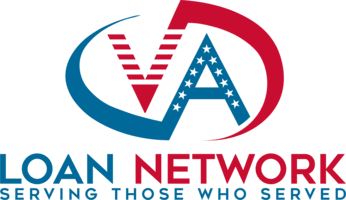Looking to buy a home with a VA loan?
Understanding the income requirements is key. Unlike conventional mortgages, VA loans are backed by the U.S. Department of Veterans Affairs and offer unmatched benefits like no down payment and no PMI. But qualifying isn’t automatic—you’ll need to show your income is steady, sufficient, and likely to continue.
From understanding debt-to-income (DTI) ratios to meeting VA’s unique residual income requirements, this guide breaks down what it really takes to get approved.
Whether you’re a veteran, service member, or eligible spouse, we’ll help you navigate the path to qualification.
In this Article
What Are VA Loans?
VA loans are government-backed mortgages provided through the U.S. Department of Veterans Affairs. These loans are specifically designed to help eligible Veterans, active-duty service members, and some surviving spouses achieve homeownership with fewer financial barriers.
Established in 1944 as part of the GI Bill, VA loans have empowered millions of military families to buy or refinance homes with significant advantages not available through conventional financing.
Key benefits of VA loans include:
- No down payment required: This eliminates one of the biggest hurdles to homeownership for many borrowers.
- No private mortgage insurance (PMI): VA loans don’t require PMI, saving buyers hundreds per month compared to conventional loans.
- Competitive interest rates: Rates are often lower than traditional mortgages because VA loans are backed by the government.
- Flexible credit guidelines: VA lenders may approve buyers with lower credit scores than typically required for conventional loans. In some cases you can get approved for a VA loan with a 580 credit score.
While military service is the foundation of eligibility, lenders also closely evaluate your income and financial standing to ensure you can handle the loan responsibly.
Understanding VA Loan Income Requirements
Lenders use two major criteria when reviewing income for a VA loan: income stability and income sufficiency. Meeting both is crucial for approval.
Income Stability
Your income must be stable and likely to continue for at least the next three years. This shows lenders you have a dependable way to make your mortgage payments over time.
Acceptable documentation includes:
- Recent pay stubs and W-2s (if employed)
- Tax returns and profit/loss statements (if self-employed)
- VA disability, retirement pay, Social Security, or other steady non-taxable income
Short employment gaps may be acceptable if you can explain them—common examples include temporary layoffs, deployments, or family leave.
Income Sufficiency
Your income must be enough to cover your mortgage payment, other debts, and day-to-day living expenses. To assess this, lenders look at two important numbers:
- Debt-to-Income (DTI) Ratio
- Residual Income
Debt-to-Income Ratio (DTI) for VA Loans
The VA DTI ratio is the percentage of your gross monthly income that goes toward debt payments—including your expected mortgage.
Here’s what to know:
- Target DTI: 41% or lower is ideal for VA loan approval.
- Flexible maximum: Some lenders allow DTIs up to 50% if other financial factors are strong.
- Common compensating factors:
- High credit score
- Significant liquid assets or savings
- Low utility and housing costs
- Exceptional residual income
Even if your DTI exceeds 41%, your loan can still be approved with strong residual income or other strengths in your profile.
Use our DTI calculator to figure out your debt-to-income ratio on a VA loan
VA Residual Income Guidelines
Residual income is the amount of money left after paying your mortgage, debts, taxes, and basic living expenses. The VA requires a minimum residual income based on loan size, location, and household size.
| Region | Loan Amount ≤ $80,000 | Loan Amount > $80,000 |
|---|---|---|
| Northeast | $1,295 | $1,881 |
| Midwest | $1,269 | $1,842 |
| South | $1,269 | $1,842 |
| West | $1,319 | $1,915 |
Source: VA Residual Income Guidelines. Family size includes all dependents living in the home.
Types of Income That Qualify
Lenders can use a wide variety of income sources, provided they are stable, consistent, and well-documented.
- Salary or hourly wages
- Military pay, including allowances
- Self-employment income (with a 2-year history)
- Retirement or pension income
- Spousal income
- Alimony, child support, long-term disability, or trust income (with documentation)
How Lenders Verify Your Income
- Pay stubs from the last 30 days
- W-2s or full tax returns for the past two years
- Bank statements showing deposits and cash flow
- Verification of employment (VOE)
- VA award letters or Social Security documentation
- Rental income (must be supported by past tax returns)
Common Challenges with VA Loan Income Qualifications
- High DTI Ratio: May require compensating factors to offset risk.
- Irregular Income: Self-employed or seasonal workers may face extra scrutiny.
- Recent Job Changes: Changes within the same field or promotions are usually acceptable.
- Low Residual Income: May require reducing your debt or seeking a lower loan amount.
Comparing VA Loans to Other Loan Types
| Loan Type | Minimum Income | DTI Ratio | Residual Income | Down Payment |
|---|---|---|---|---|
| VA Loan | No minimum | ≤41% (flexible) | Required | 0% – No PMI |
| FHA Loan | No minimum | ≤43% | Not required | 3.5% – Low credit friendly |
| Conventional | No minimum | ≤45% | Not required | 3–20% – Flexible property options |
Steps to Qualify for a VA Loan
- Check your Certificate of Eligibility (COE)
- Review your income, credit, and DTI
- Gather all necessary documents
- Shop for a VA-approved lender
- Get pre-approved before house hunting
- Find a home that meets VA minimum property requirements
FAQs About VA Loan Income Qualifications
- Is there a minimum income requirement for a VA loan?
No, there’s no official minimum income. However, you must show consistent income sufficient to cover your mortgage, debts, and meet regional residual income guidelines set by the VA. - Can VA disability income count toward qualification?
Yes, VA disability income is accepted as stable, non-taxable income and can be used to qualify for a VA loan. It also helps reduce your effective debt-to-income ratio. - What if my DTI ratio is over 41%?
If your DTI is above 41%, you may still qualify with strong compensating factors like excellent credit, large savings, or high residual income exceeding VA’s regional minimums. - Does self-employment affect VA loan eligibility?
Self-employed borrowers can qualify if they have at least two years of consistent income, verified through tax returns and business records. Irregular or declining income may require extra documentation. - Can I use my spouse’s income to qualify?
Yes, if your spouse is a co-borrower, their income can be included in DTI and residual income calculations, as long as it’s verifiable and expected to continue. - What happens if I don’t meet residual income requirements?
If you fall short on residual income, you may need to reduce debt, lower the loan amount, increase income, or add a co-borrower to meet VA guidelines. - Can overtime or bonus income count?
Yes, but it must be consistent over the past two years and likely to continue. Lenders will verify with employer documentation or tax records before counting it toward your income. - Do I need a job to qualify for a VA loan?
You need stable, verifiable income, which often comes from employment. However, retirement pay, VA benefits, or other consistent income sources can also qualify you, even without a job. - How does my credit score affect income requirements?
A higher credit score doesn’t change income guidelines but can offset higher DTI ratios. It’s considered a compensating factor that may help you qualify with borderline income. - Can I qualify with part-time income?
Yes, part-time income counts if you’ve received it for at least two years and it’s expected to continue. Lenders verify its consistency and stability before approval. - Can I qualify for a VA loan if I’m in military training or school?
Possibly, but you must show current income or a job offer that begins within 60 days of closing. Additional assets or a co-borrower can help bridge the gap.
Tips for Strengthening Your VA Loan Application
- Pay down revolving debt to lower your DTI ratio
- Improve your credit score by making on-time payments
- Save cash for closing costs and reserves
- Work with a lender who specializes in VA loans
Why VA Loan Income Requirements Are Worth It
VA loan rules aren’t about making things harder—they’re about protecting you. By requiring residual income and reviewing DTI, the VA ensures you have enough left over for daily living and emergencies. This lowers the risk of foreclosure and sets you up for long-term financial success.
Compared to other loan types, VA loans offer unmatched advantages: no down payment, no PMI, and lower average interest rates. In 2024, VA loans were 0.5–1% cheaper on average than conventional loans (source: Freddie Mac), translating to thousands saved over the loan’s lifetime.
Real-World Example: Qualifying with VA Disability Income
Suppose you receive $3,000 monthly in VA disability benefits and want a $200,000 loan. You live in the South and have $800 in monthly debts. Your DTI is 26.7%—well under 41%. But after a $1,200 mortgage and your $800 debt payments, you have only $1,000 left. The VA requires $1,842 in residual income for your region and loan size. To qualify, you may need to pay off a debt, lower the loan amount, or consider co-borrowing with a spouse.
Next Steps: Start Your VA Loan Journey
Qualifying for a VA loan isn’t about reaching a magic number—it’s about demonstrating financial readiness. Now that you understand DTI, residual income, and how to document your finances, you’re ready to move forward. Start by securing your Certificate of Eligibility, gathering your financial paperwork, and connecting with a trusted VA-approved lender.
You’ve served your country—now let your VA loan benefit serve you.
Explore your options, ask questions, and take the next step toward homeownership.
Fill out our short for to be connected with a VA lender in our network.


